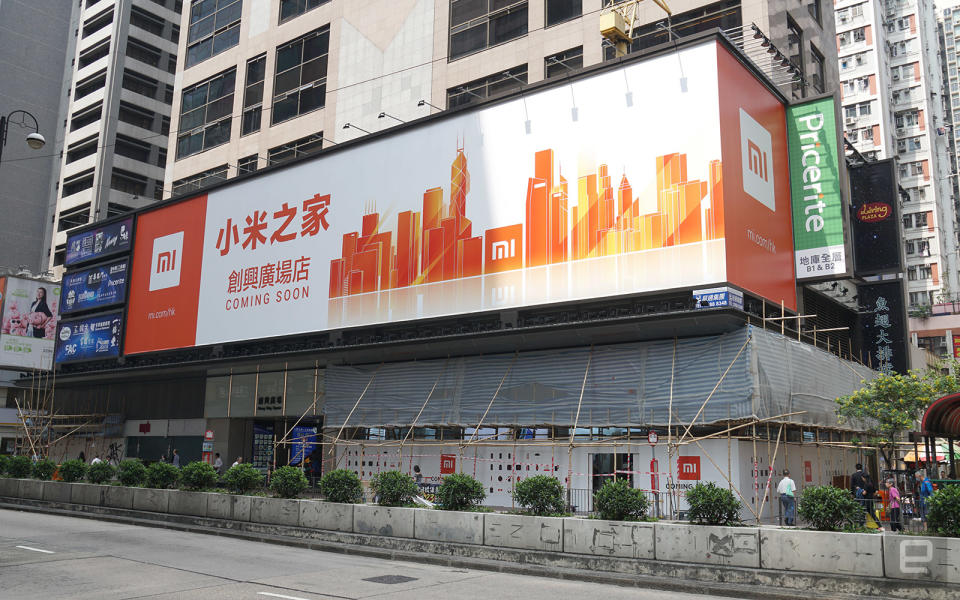Xiaomi's Hong Kong IPO expected to raise at least $10 billion
This may become the largest IPO in recent years, according to Bloomberg.
Xiaomi's interest in listing on the Hong Kong Stock Exchange hasn't exactly been a well-kept secret, and following months of speculation, the time has finally arrived. Today, the Chinese smartphone maker filed its initial public offering documents, and according to Bloomberg's sources, this IPO is expected to raise "at least $10 billion." This would make it the world's largest IPO since Alibaba listed for $25 billion in New York back in 2014. Furthermore, Bloomberg said Xiaomi may see a valuation of "as high as $100 billion," which is about one-ninth of Apple's.
Xiaomi's documents also shed light on some fine details about its fast-growing business. For instance, in 2017 Xiaomi generated a revenue of 114.6 billion yuan or about $18 billion -- a 67.5-percent jump -- though it ended up with a loss of 43.9 billion yuan or about $6.9 billion, which looks even worse against the mere 491.6 million yuan or $77.2 million profit in the year before.
Still, CEO Lei Jun emphasized in his open letter that following the declining smartphone sales in 2016, his company went through a transition and managed to rebound in 2017 -- going from 55.4 million devices back up to 91.4 million, with a stronger focus on developing markets like India and Indonesia. The documents also refer to IDC to remind us that Xiaomi nabbed top position in India for Q4 2017 smartphone shipments, as well as being number four globally in Q1 2018. The CEO added that his company pledges to cap its hardware business net profit margin at 5 percent, and that any excess will somehow be returned to the users.
Of course, this also suggests that Xiaomi is making good money through its internet services -- mainly ads and value-added services. In December 2017, Xiaomi counted 170.8 million active users on its custom Android platform, MIUI, with each user generating an average of 57.90 yuan or about $9.10 for the company's internet services, totalling a $1.6 billion revenue for that month alone. In March this year, Xiaomi's count went up to 190 million monthly active users, but the report doesn't have a corresponding revenue figure.

While Xiaomi continued to expand its product portfolio to include more smart home devices and lifestyle products, it had also been working hard on expanding its physical presence around the world. In 2017, Xiaomi's Mi Home stores made 240,000 yuan or about $37,700 in annual sales per square meter which, according to iResearch, is "the second highest average sales per square meter amongst retail store chains globally." Still, the company warns that its retail store operation requires a substantial investment, which may explain its losses.
As of end of March, Xiaomi has 331 self-operated Mi Home retail stores in China alone, along with over 200 stores -- a mix of Mi Homes and authorized stores -- around the world. Following the Taipei Mi Home store opening last month, Xiaomi is opening a new Hong Kong Mi Home flagship store (pictured above) at a prime location tomorrow -- very fitting given the timing of the IPO filing plus the local launch of the Mi Mix 2S. Xiaomi also has plans to break into the US as early as end of this year, but given the recent mishaps with Huawei and more so with ZTE, it'll be interesting to see how Lei Jun's team will succeed, if at all.





